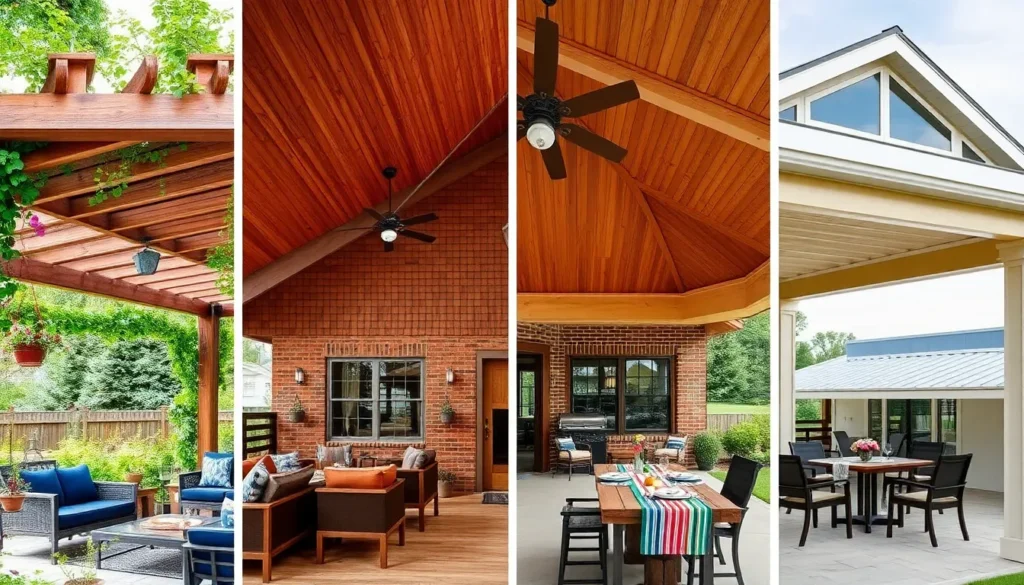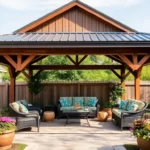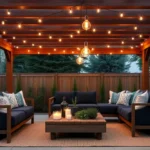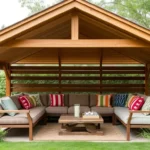Transforming your patio into a charming extension of your home begins with the right roof design, and we’re here to guide you through the possibilities. Whether you’re just starting to explore outdoor living or you’re a seasoned homeowner looking to refresh your space, a thoughtfully chosen patio roof can enhance both the aesthetic and functionality of your outdoor area. With so many options available, finding the perfect match for your home’s style and your personal needs can feel daunting, but it’s an exciting journey that promises delightful results.
In this article, we’ll explore six diverse patio roof designs that cater to every taste and architectural style, from classic pergolas to sleek modern canopies. You’ll discover practical insights into how each option can transform your outdoor sanctuary, providing shade, protection, and a sense of style that complements your home. Join us as we delve into these creative solutions, empowering you to make informed decisions that will elevate your outdoor living experience and create a welcoming space for relaxation and entertainment.
Choosing Durable Patio Roof Materials
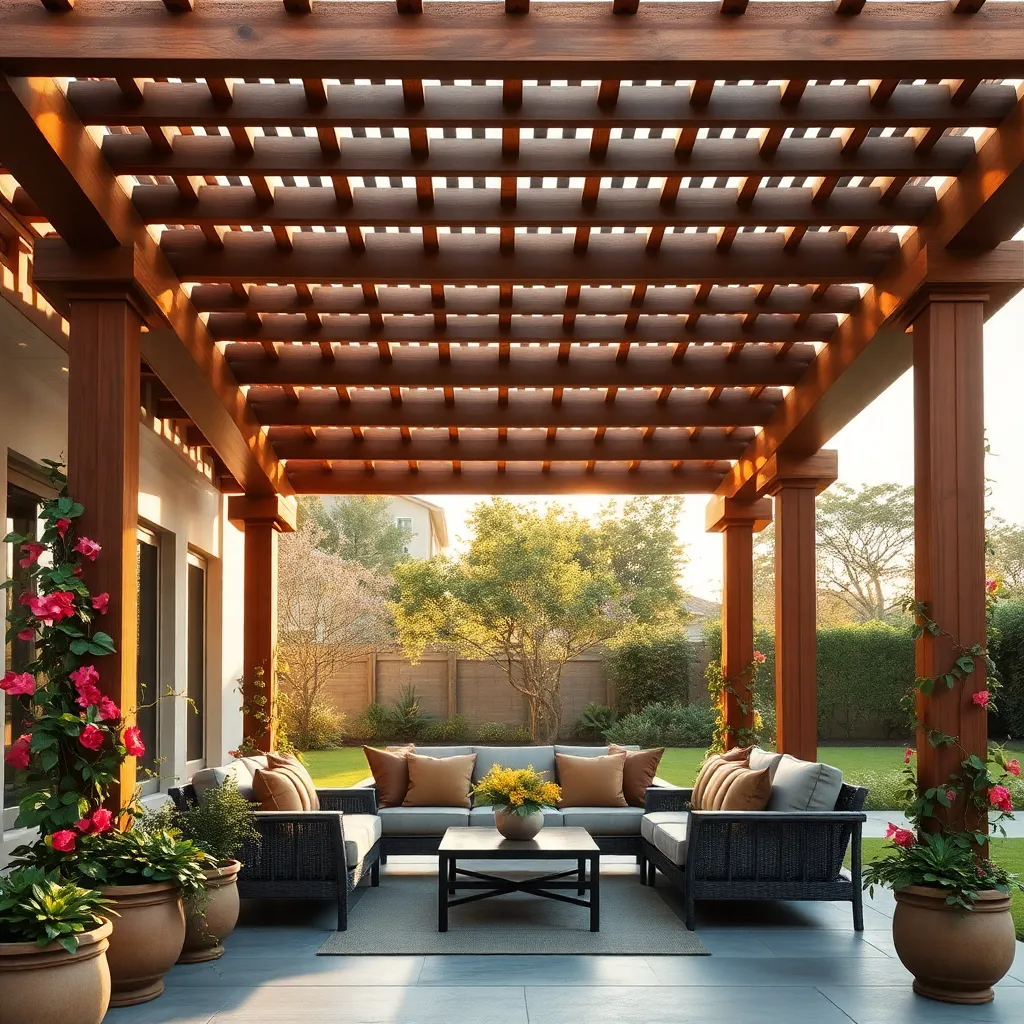
When selecting materials for a patio roof, consider durability and weather resistance as top priorities. Metal roofing, such as aluminum or steel, is a great option due to its long lifespan and ability to withstand harsh elements. For a more natural look, consider wooden beams treated with weather-resistant sealants. These not only offer a traditional aesthetic but also provide structural strength. Combine these materials with polycarbonate panels to allow light penetration while ensuring protection from UV rays.
For those looking to add a modern touch, consider using composite materials that blend wood fibers and plastic, offering both durability and low maintenance. Ensure your patio roof has a slight pitch, typically around 5-10 degrees, to facilitate water runoff and prevent pooling. Incorporate
- gutter systems
- downspouts
- flashing
to further protect your home from water damage. By selecting the right materials and construction techniques, you can create an attractive and long-lasting outdoor retreat.
Exploring Classic Pergola Designs
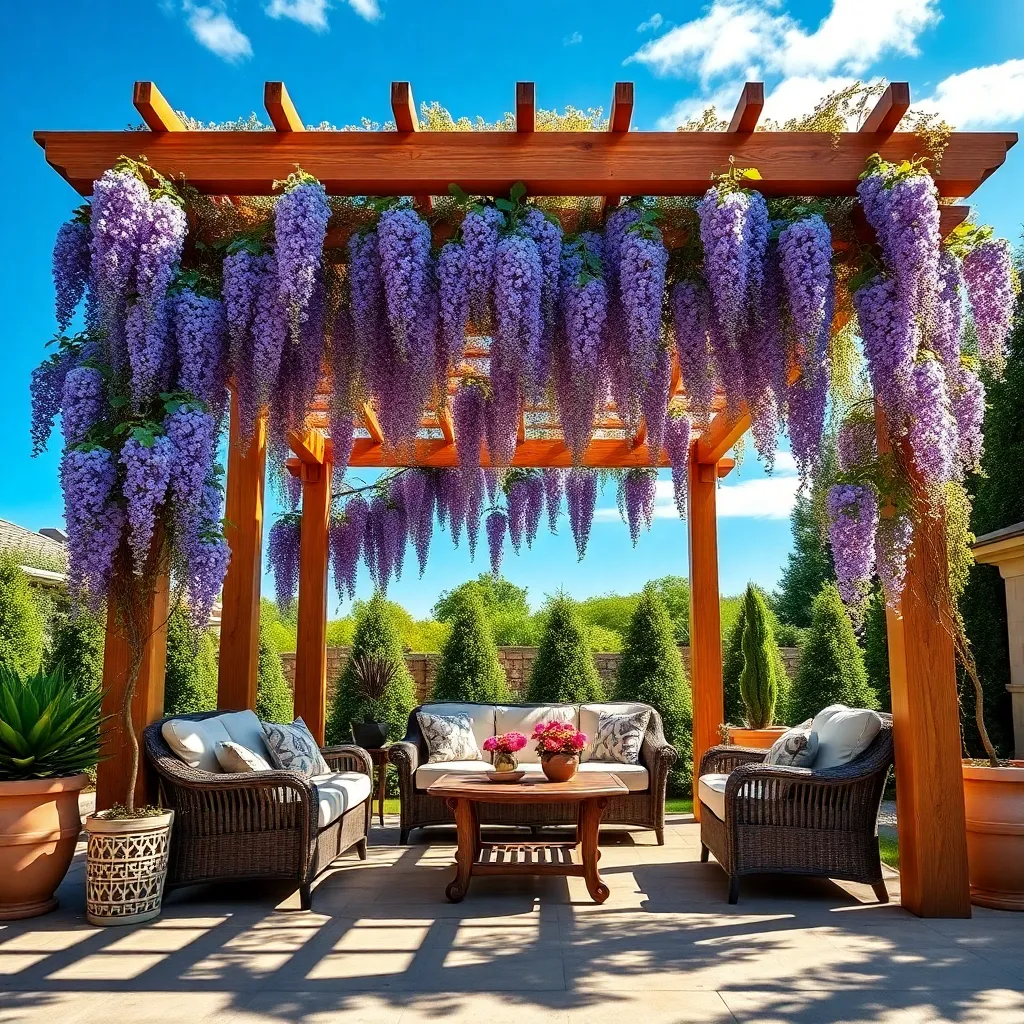
Classic pergola designs offer a timeless appeal that can transform any outdoor space into an inviting retreat. Start with a basic structure using durable materials like cedar or redwood, known for their natural resistance to decay and insects. For a more permanent solution, consider aluminum or vinyl, which require less maintenance. Ensure your pergola is proportionate to your patio: a standard dimension of 10×10 feet is a good starting point, but always tailor it to fit your space. Beginners can opt for ready-to-assemble kits, while seasoned DIYers might enjoy customizing their design with unique features like curved beams or integrated planters.
Beyond material choices, enhancing your pergola with design elements can add both function and beauty. Incorporate climbing plants like wisteria or grapes to create a lush, shaded canopy. Consider adding string lights or lanterns for an ambient evening atmosphere. Advanced builders might integrate retractable canopies or side screens for added weather protection. Remember, the key to a successful pergola is in the details: ensure all fasteners and joints are securely fixed, and use weatherproof finishes to extend the life of your outdoor structure. With these tips, your pergola will be a cherished feature of your garden for years to come.
Integrating Modern Retractable Awnings
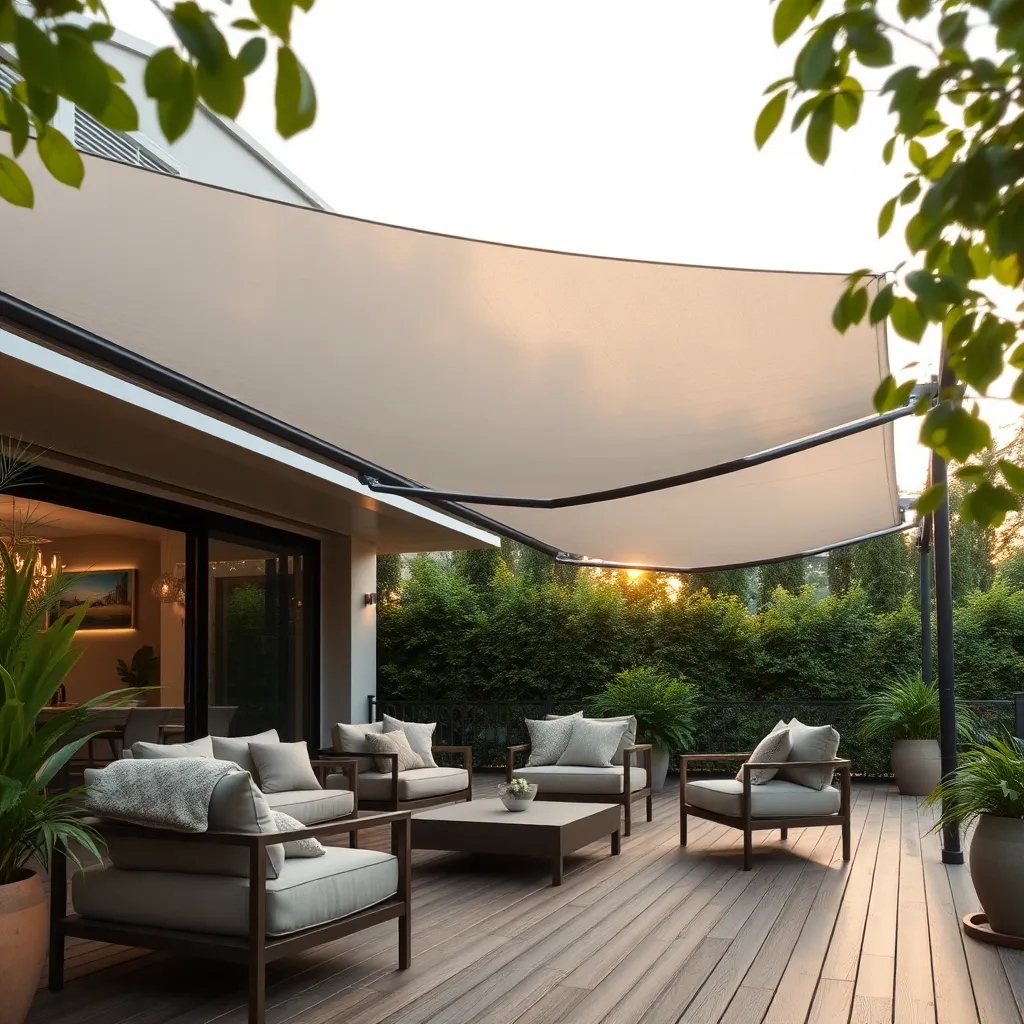
Integrating modern retractable awnings into your patio design can provide both style and functionality. These versatile structures offer adjustable shade and protection from the elements with the simple push of a button. When selecting materials, consider options like aluminum frames for durability and acrylic fabrics that resist UV rays and mildew. For beginners, a motorized system offers ease of use, while more advanced DIYers might explore solar-powered models for energy efficiency.
For a seamless integration, ensure your awning complements your home’s architectural style. Opt for neutral or complementary fabric colors to blend with existing outdoor decor. Installation height is crucial; aim for a minimum clearance of 8 feet to avoid obstructing any views. Advanced users might incorporate smart home technology to automate their awning, adjusting based on weather conditions. This modern approach not only enhances outdoor living spaces but also adds value to your property.
Incorporating Eco-Friendly Green Roofs
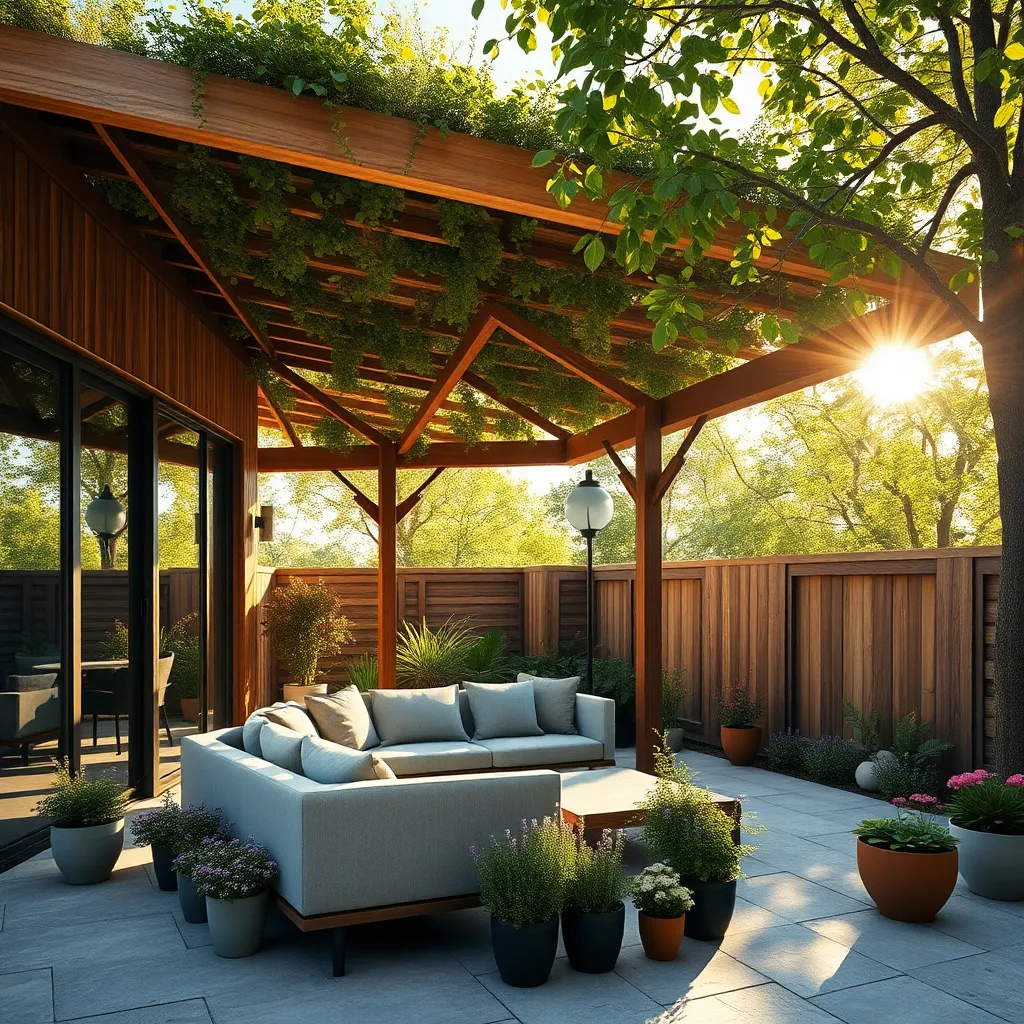
Taking your patio to the next level with a green roof not only enhances aesthetics but also promotes environmental sustainability. Start by selecting hardy plants like sedums and native grasses that can thrive in shallow, well-drained soils. For beginners, modular green roofing systems simplify installation and maintenance, while experienced gardeners might opt for a custom soil mix and integrate drip irrigation for optimal plant health. Ensure your structure can support the additional weight by consulting a professional for precise load calculations.
When planning your green roof, consider using lightweight, recycled materials for the growing medium to reduce overall load. Incorporate a waterproof membrane beneath your planting area to prevent water damage, and include drainage layers to manage excess rainwater. Advanced gardeners might explore incorporating solar panels alongside their green roof for a dual-purpose design. For dimensions, aim for a minimum of 4 inches in soil depth to support a variety of plant species, ensuring a robust and vibrant ecosystem right above your patio.
Enhancing Style with Glass Canopies
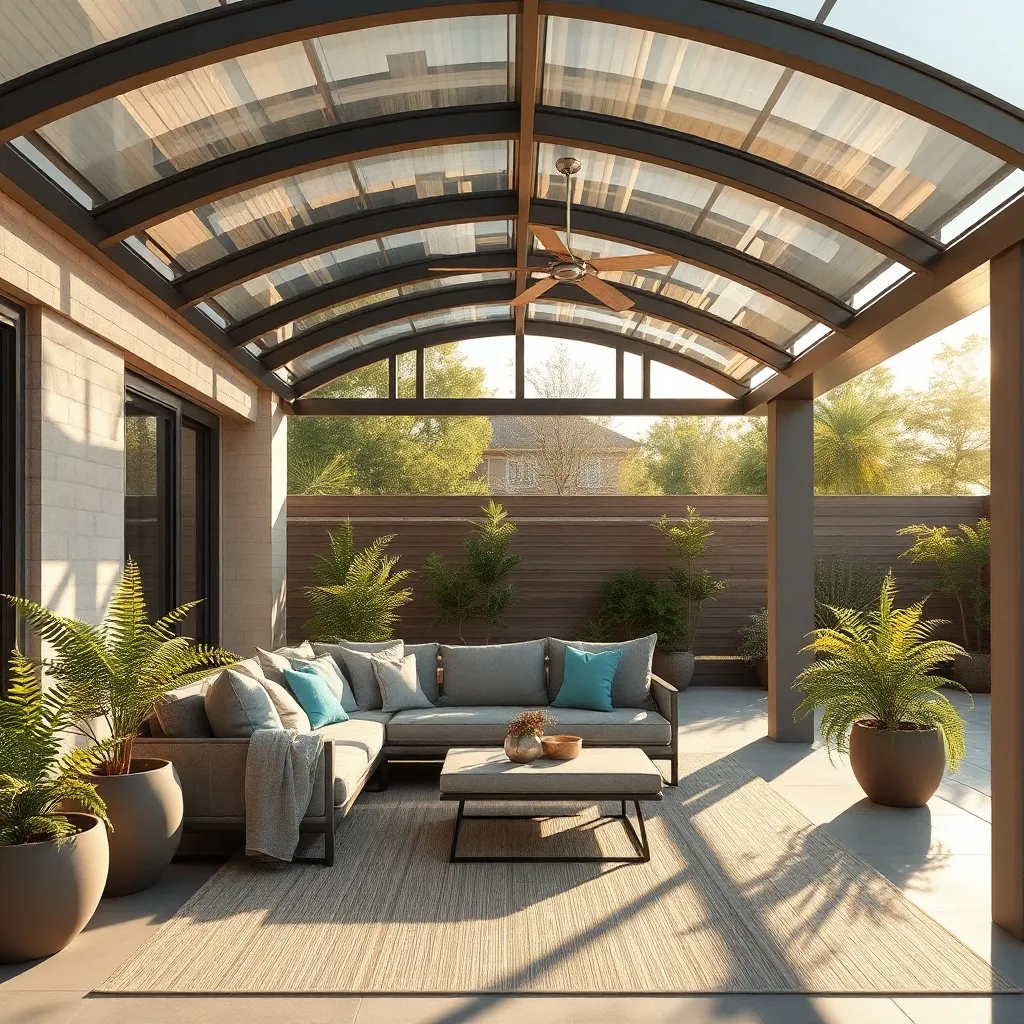
Glass canopies are an elegant way to add a modern touch to your patio, offering both style and function. They allow natural light to permeate your outdoor space while providing protection from rain and UV rays. For a sleek and minimalist look, opt for tempered glass supported by stainless steel brackets. This combination not only enhances durability but also ensures a clean, unobtrusive design. To ensure safety and longevity, regular maintenance such as checking the brackets and cleaning the glass with a non-abrasive cleaner is essential.
When considering glass thickness, a minimum of 10mm is recommended for durability, with laminated glass being a great choice for added safety. Advanced installations might integrate frosted or tinted glass to control sunlight exposure and add privacy. For an eye-catching design, consider integrating LED strip lights along the edges of the canopy for ambient evening illumination. Key considerations include ensuring proper drainage and sloping the canopy slightly to prevent water pooling. Whether you’re a novice or an experienced DIY enthusiast, these glass canopy ideas can transform your patio into a stylish, functional oasis.
Maximizing Shade with Solid Covers
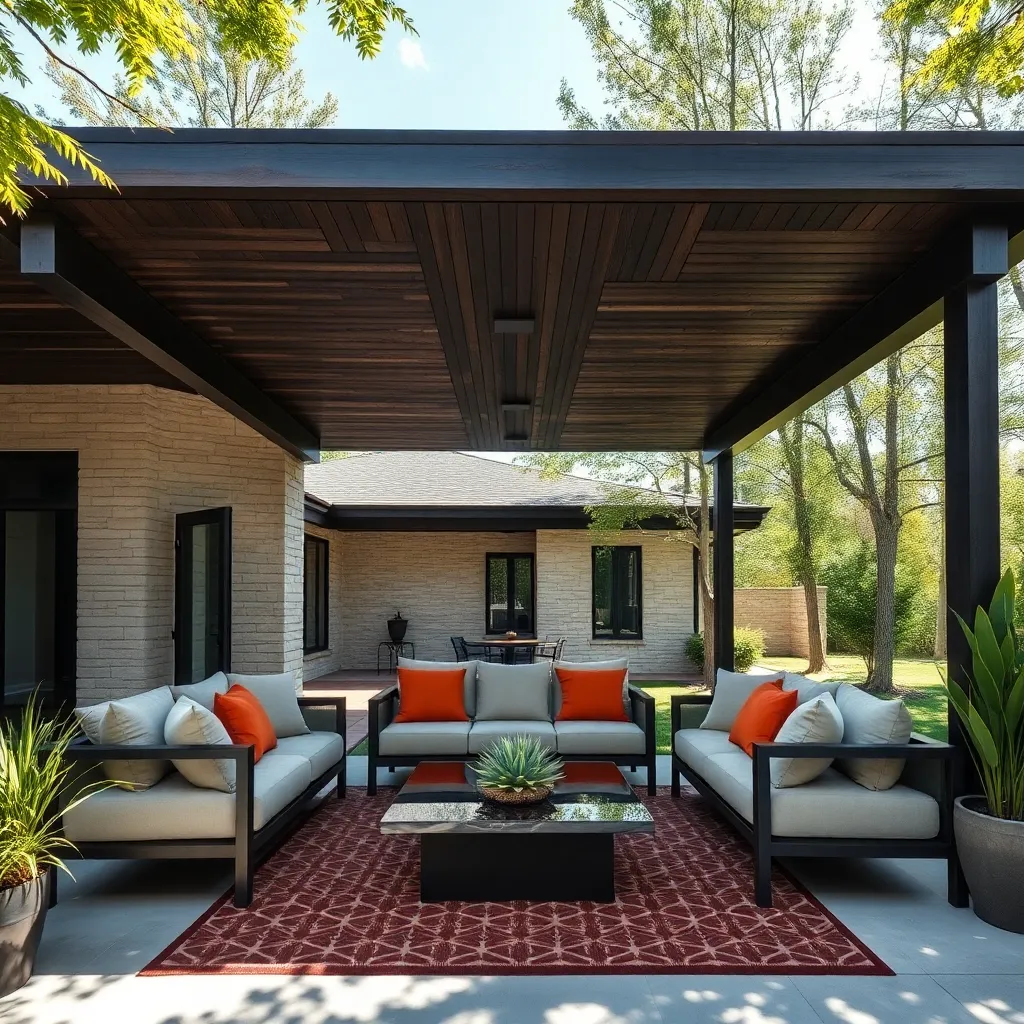
For homeowners looking to maximize shade while maintaining a sleek, unobtrusive look, solid covers like metal or wood are a fantastic option. These materials provide reliable protection from the sun and rain, ensuring year-round usability of your patio space. Metal roofs, such as those made from aluminum, are excellent for those seeking durability and low maintenance. Meanwhile, wood offers a natural aesthetic that can be stained or painted to match your existing outdoor decor. When designing your solid cover, ensure it is slightly sloped to allow rainwater to drain efficiently, preventing water pooling and potential damage.
Consider incorporating additional elements such as built-in lighting or ceiling fans to enhance functionality and comfort. Advanced tips for experienced DIY enthusiasts include integrating solar panels into a metal roof to increase energy efficiency, or opting for adjustable louvers that offer both shade and ventilation. For wood structures, using treated lumber or cedar can increase longevity and resistance to the elements. When planning your project, ensure that the dimensions of your solid cover are proportionate to your patio area, allowing ample coverage without overwhelming the space. By thoughtfully balancing materials and design, your patio can become a stylish, shaded retreat.
Conclusion: Creating Beautiful Outdoor Spaces
In exploring the ‘6 Patio Roof Design Options for Every Home,’ we’ve uncovered six key relationship concepts: understanding each other’s needs, aligning on shared goals, the importance of compromise, fostering open communication, embracing creativity, and valuing diversity in perspectives. Just as each patio roof design offers unique benefits tailored to different homes, these relationship principles cater to various dynamics and aspirations, ensuring a harmonious and fulfilling connection.
Now is the perfect time to choose one of these concepts to focus on in your relationship. Perhaps start with an open conversation about shared goals or get creative with a new joint activity. Taking small, intentional steps can make a significant difference.
Remember, relationships are living entities that grow and evolve. Bookmark this article to revisit these foundational principles as you navigate the beautiful journey of your relationship. Saving this resource ensures you have a handy reference whenever you need a nudge in the right direction.
With commitment and intentionality, your relationship can flourish into an enduring partnership marked by mutual respect and joy. Embrace the opportunity to learn and grow together, building a future filled with love and understanding.

